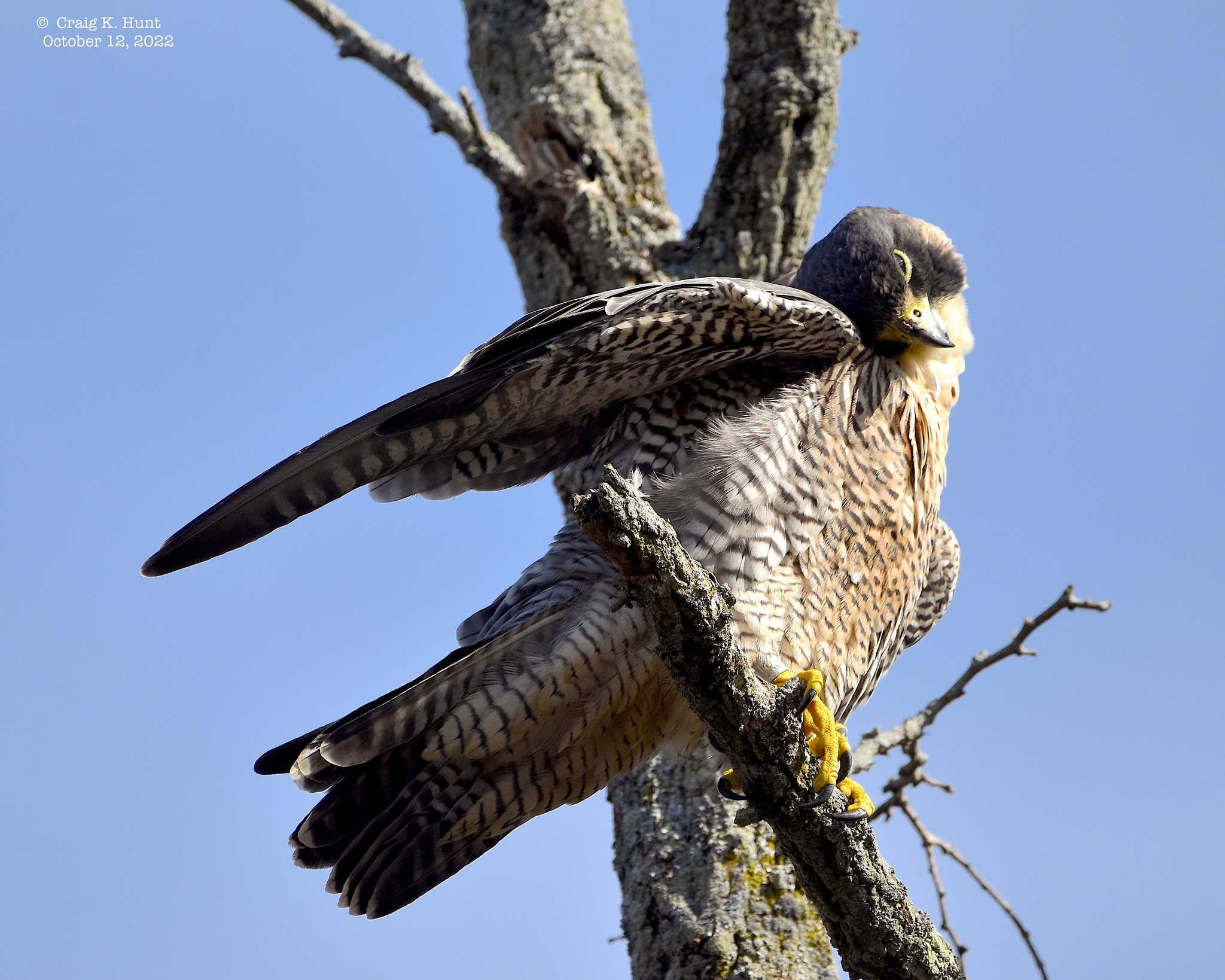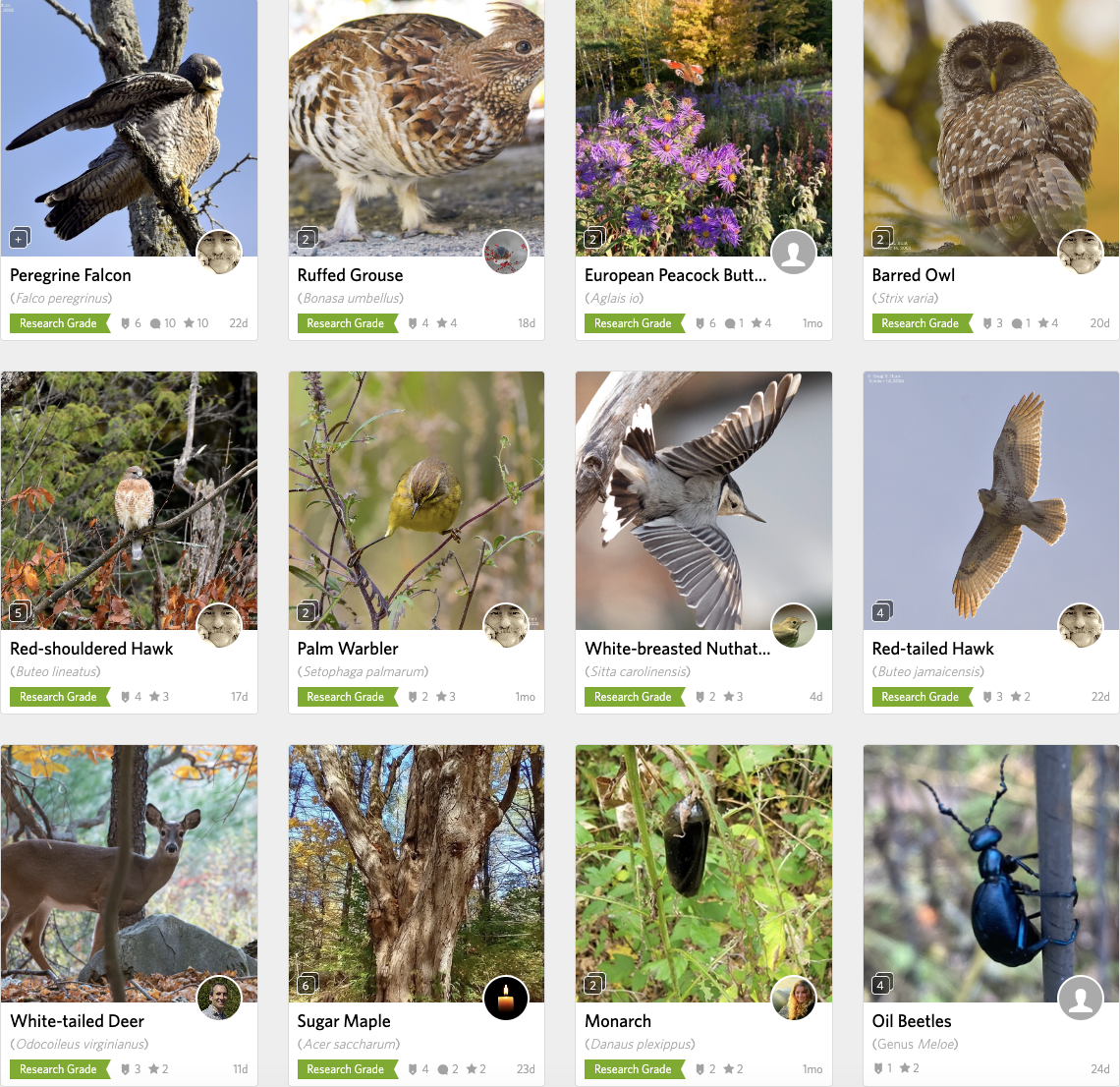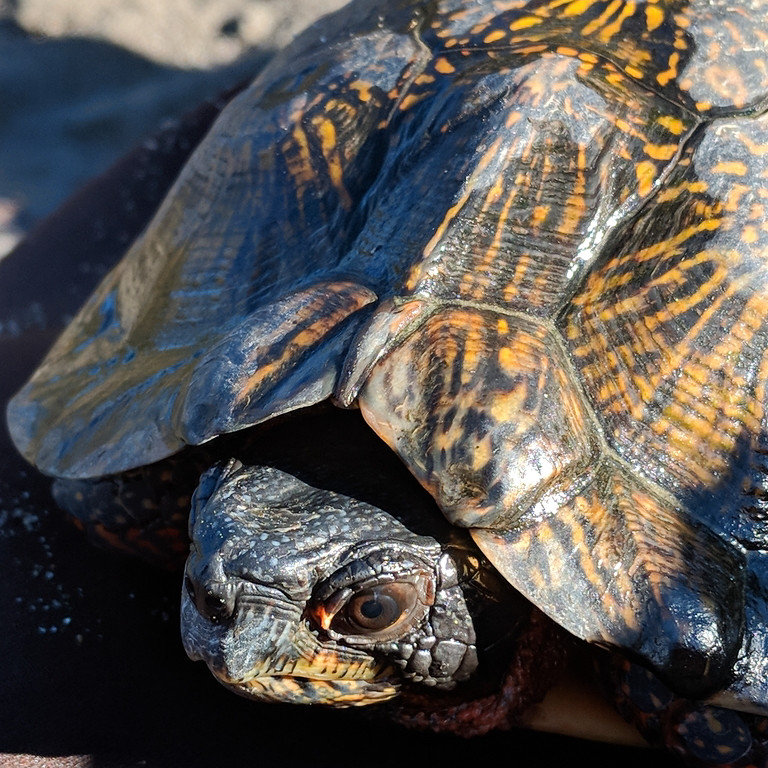October 2022 Photo-observation of the Month

A Peregrine Falcon stretches and preens, can you spot the metal numbered band on her leg? © @ckhunt
Congratulations to @ckhunt for winning the October 2022 Photo-observation of the Month for the Vermont Atlas of Life on iNaturalist! His photo of a banded Peregrine Falcon received the most faves of any iNaturalist observation in Vermont during the past month.
The Peregrine Falcon is known far and wide as a speed demon, a champion migrant, and a true conservation success story. Those are all reason enough for a stellar image of this charismatic bird of prey to sit alone atop the list of most-faved Vermont Atlas of Life on iNaturalist observations for the month, but this individual Peregrine Falcon is more than meets the eye. Thanks to a keen eye and crisp photos, Vermont iNaturalist-er Craig Hunt was able to learn more about this Peregrine Falcons’ past by documenting and reporting the colored and metal numbered bands on its legs. Things came together piece-by-piece as Craig and other iNaturalist users inspected the bands. The placement of color bands on the left leg revealed that this bird was a female, and the combination of black over green color bands indicated that this was a bird banded in eastern North America. Craig sent his photos and as many of the numbers on the metal band as he could read to the USGS Bird Banding Lab and learned that this Peregrine Falcon was banded as a hatchling alongside three siblings in Lewiston, Maine in May of 2021. In addition to this information, the Maine Department of Inland Fisheries and Wildlife was even kind enough to send along a photo of the very same Peregrine Falcon on the day she was banded! With this tale in mind, keep an eye out for other banded birds (especially waterfowl and birds of prey, which often have large, colorful, more easily visible bands) and be sure to report any banded bird sightings to the USGS Bird Banding Lab at the link above.

With 12,656 observations submitted by 1,370 observers in October, it was very competitive. Click on the image above to see and explore all of the amazing observations.
Visit the Vermont Atlas of Life on iNaturalist where you can vote for the winner this month by clicking the ‘fave’ star on your favorite photo-observation. Make sure you get outdoors and record the biodiversity around you, then submit your discoveries and you could be a winner!




 Usá ArgentiNat con app iNaturalist
Usá ArgentiNat con app iNaturalist





